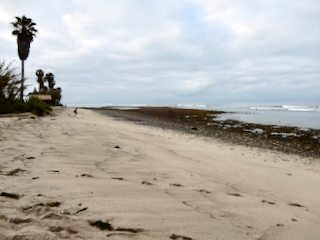
-
| 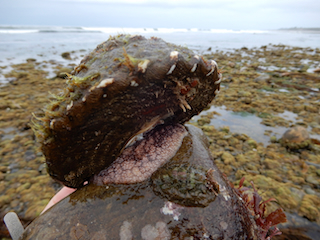
We saw many wavy turban snails (Megastraea undosa).
| 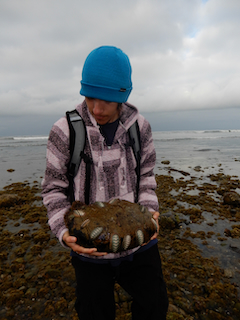
-
|
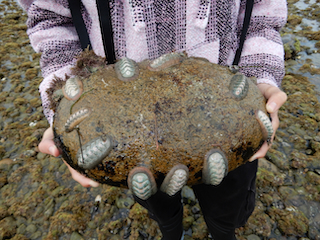
Stenoplax conspicua (conspicuous chitons) are common on the underside of rocks at Surf Beach.
| 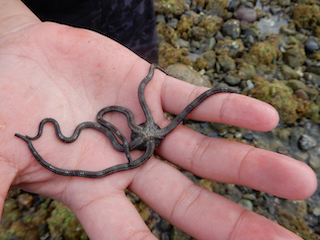
-
| 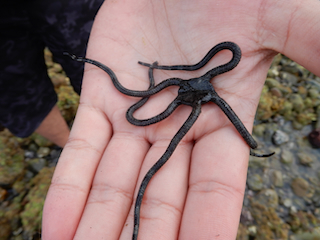
Ophioderma panamense (Panama brittle star)
|
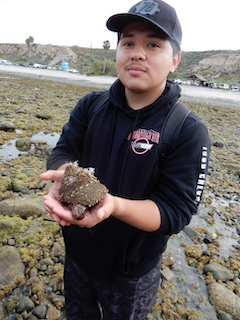
-
| 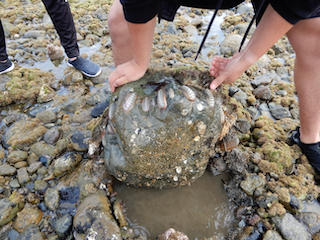
-
| 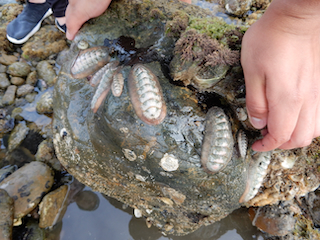
-
|
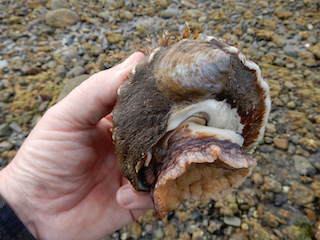
This wavy turban was a little unusual in only having a
single Crepidula onyx (onyx slipper snail) attached. I was looking but I never found any tiny white ectoparasitic snails, Pyramidellidae
(pyramidellid or pyramid snails), often around the aperture of Megastraea undosa.
| 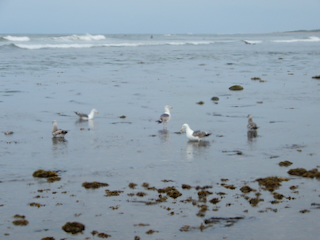
-
| 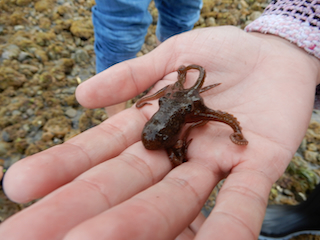
We saw about eight two spot octopuses on this visit. Neo is our current decade's 317
octopus whisperer.
|
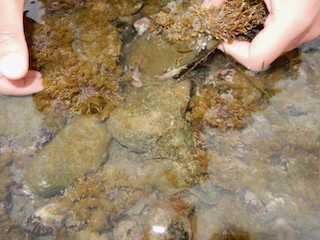
-
| 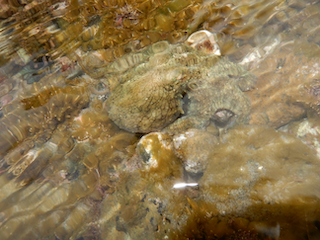
-
| 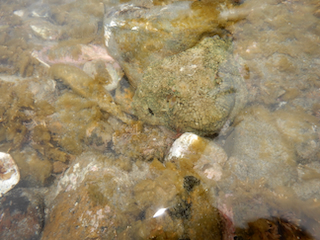
-
|
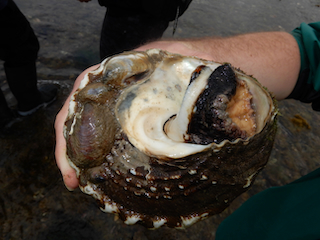
-
| 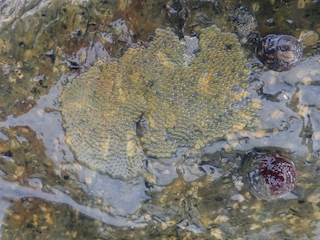
fish eggs
| 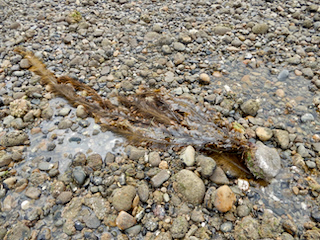
Most of the feather boa kelp (Egregia menziesii) seemed to be washed in on dislodged from the subtidal.
There used to be lots of this species at Surf Beach.
|
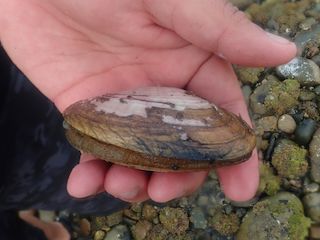
Tentative: small Tresus nuttallii (gaper)
| 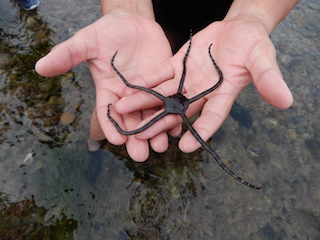
-
| 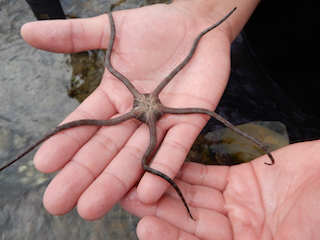
-
|
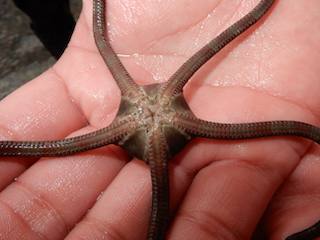
-
| 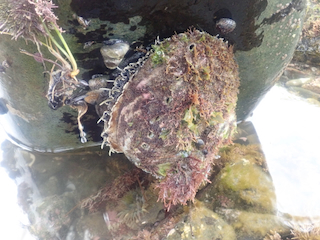
Probably a green abalone (Haliotis fulgens).
| 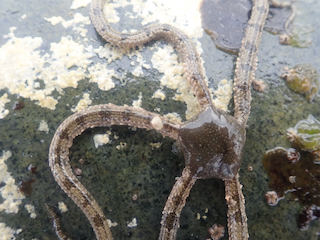
Banded brittle stars were very common under rocks. I have seen small bivalves attached to them before that
turned out to be a species I had studied in British Columbia long ago with my friend, Diarmaid, as Mysella tumida,
which was treated in the landmark West Coast bivalve book (2000; Source 1) by Coan, Valentich Scott & Bernard as Rochefortia tumida,
but is currently accepted in MolluscaBase as Kurtiella tumida (P. P. Carpenter, 1864). The current genus name dates only to
its introduction in a 2008 (Source 2) review by Serge Gofas and Carmen Salas of these clams, long known as Mysella in Europe. Both co-authors are from
the university in Málaga, Spain. - Source 1:
Bivalve Seashells of Western North America (out-of-print) - Source 2: Journal of Molluscan Studies 74: 119-135
|
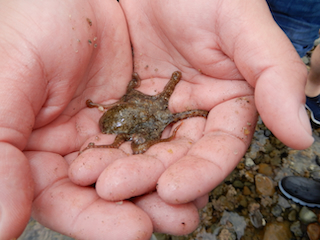
-
| 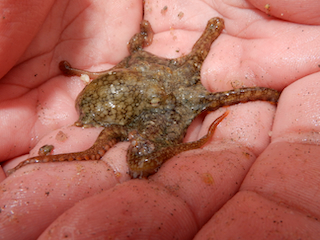
-
| 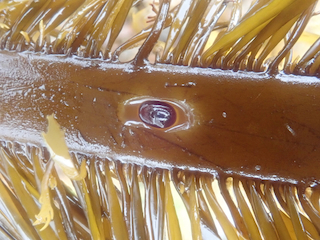
-
|
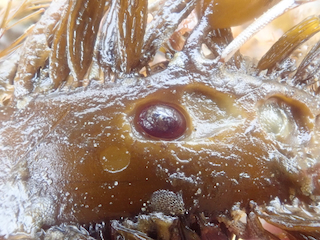
There were seaweed limpets (Lottia insessa) that had probably settled in the scars
made by earlier adult seaweed limpets.
| 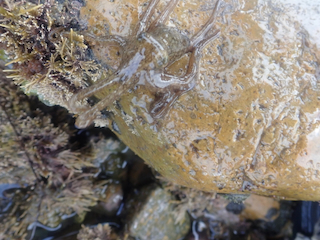
-
| 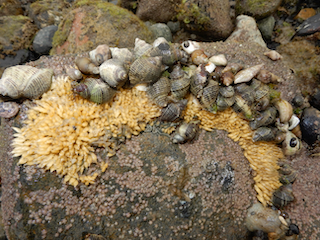
It is common to see aggregations of Acanthinucella spirata laying egg capsules at surf beach.
Here there are various hermit crabs in other shells and epizoic limpets (Lottia asmi, etc.) are mixed in here.
|
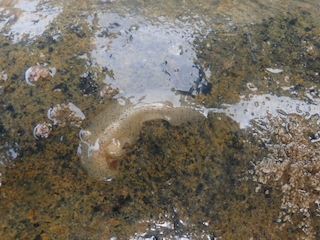
Former Bio317 student, Kelsey, liked to call this polyclad flatorm,
Enchiridium punctatum, the damatian polyclad.
| 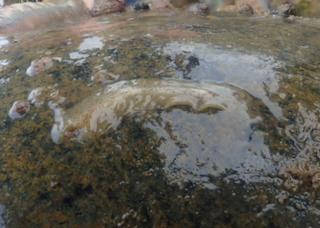
-
| 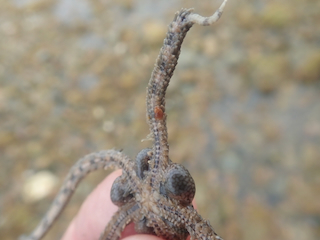
I found one of the tiny orange snails I have been looking for all semester, and this day
checking at least 100 banded brittle stars. On a previous visit, a group of us searched well and came up with 13. This is a large family, Eulimidae,
whose members specialize in parasitizing various echinoderms, but eulimids are normally thought to be lacking in the California intertidal.
It is good to know they are still around.
They were first noticed in recent years by former Bio317 student, Courtney, and she is one of the co-authors on our manuscript in prep. to describe
it as a new species from southern California. - For more, see examples of
live eulimids from
Singapore or the Marshall Islands.
|
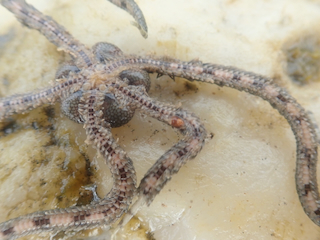
-
| 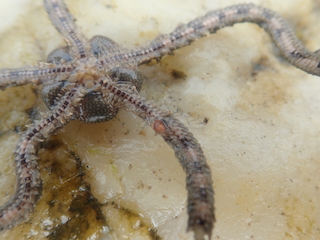
-
| 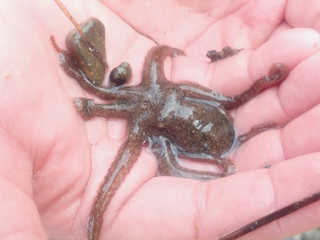
-
|
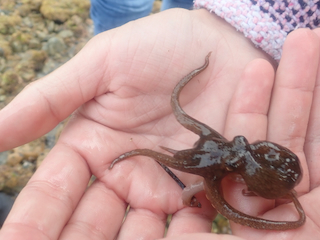
-
| 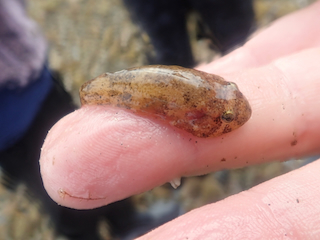
California clingfish (Gobiesox rhessodon)
| 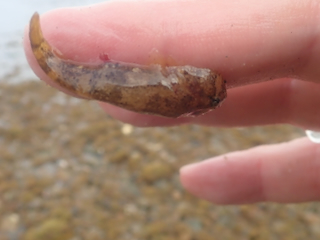
-
|
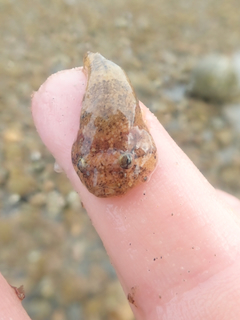
-
| 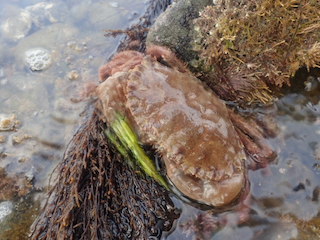
A recently molted Romaleon antennarium (formerly or to some still Cancer antennarius)
found under a rock. We noticed its carapace was soft and in its vulnerable state we put right back in its under-rock refuge.
| 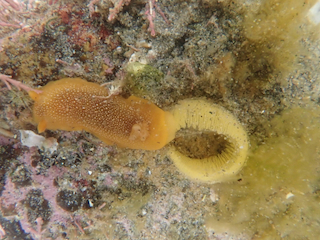
Doriopsilla albopunctata (white-spotted sea goddess) laying an egg ribbon.
This dorid nudibrach belongs to the family, Phyllidioidea, whose members are united by their absence of a radula and labial cuticle.
Instead of using a radula, phyllidioids have suctorial feeding, specialists on eating demosponges.
I learned this from a cool new paper mapping feeding traits across dorids. - Source: Anna Mikhlina, Irina Ekimova, Dimitry
Schepetov, Angel Valdes, Elena Vortsepneva, in Zoology 169 (2025) 126256.
|
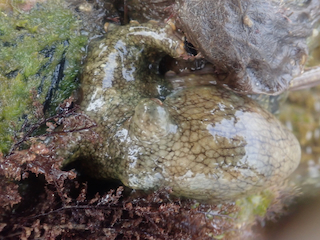
-
| 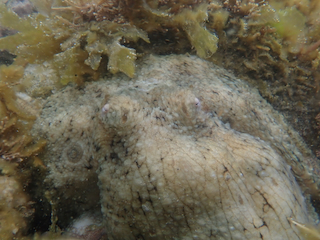
We have a pair of two spot octopus species in southern California. With the same common name
and unfortunately similar Latin names, they are hard to keep straight. Octopus bimaculoides is more typically found in the intertidal.
The other species of two spot octopus is the often larger and more often subtidal O. bimaculatus.
They differ in their reproduction. O. bimaculoides has much larger eggs, which I have only seen once many years ago on a visit to Bird Rock, La Jolla.
From these large brooded embryos that resemble a grape cluster, juveniles emerge that disperse relatively little.
In contrast, O. bimaculatus embryos/hatchlings have a planktonic stage.
I have found it difficult, but one can apparently tell these species apart by their spot pattern, one of which is seen here to the side of an eye.
| 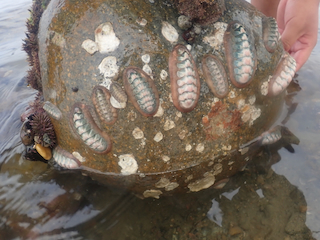
-
|
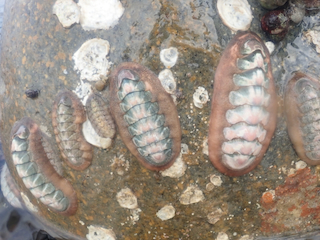
-
| 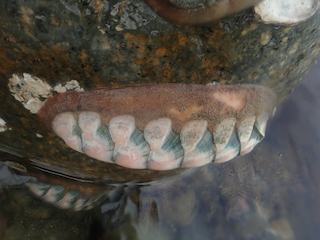
-
| 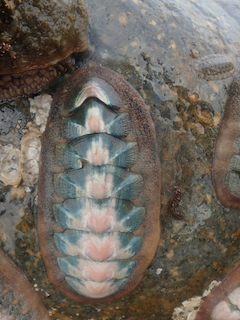
-
|
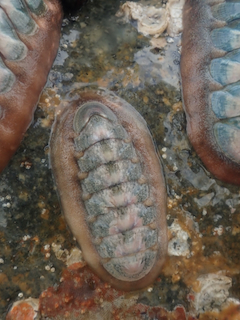
-
| 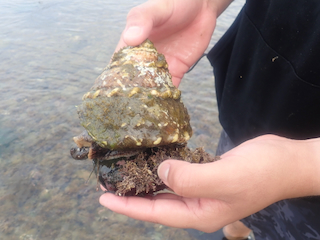
-
| 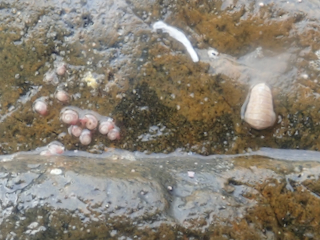
-
|
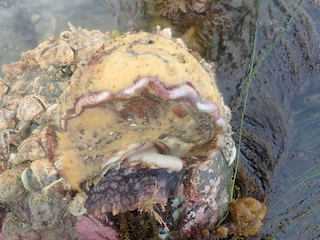
-
| 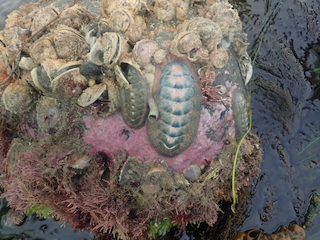
-
| 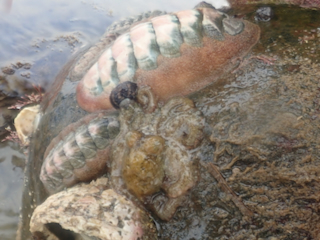
-
|
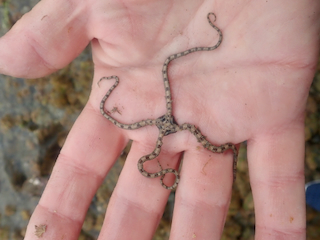
-
| 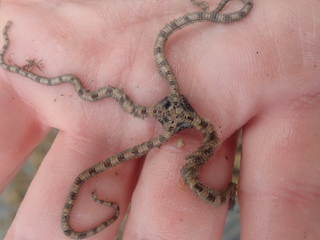
Occasionally, one can find a quadriradial banded brittle star.
| 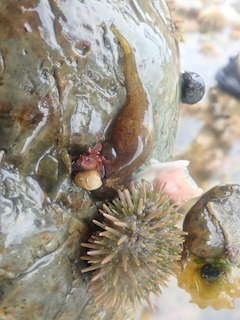
-
|
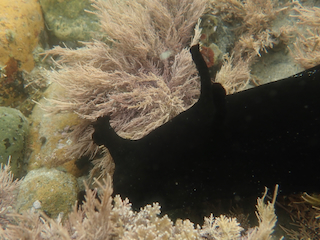
The Aplysia vaccaria (black sea hares) were common on our visit.
| 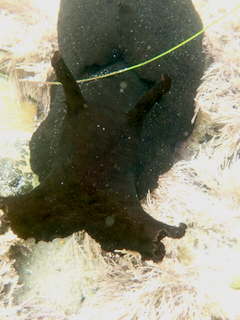
-
| 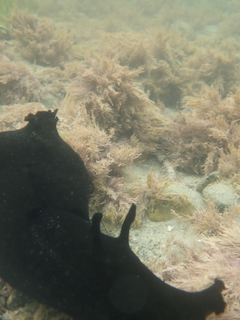
-
|
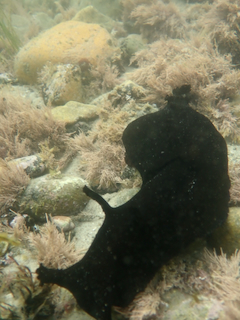
-
| 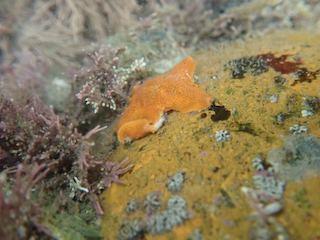
-
| 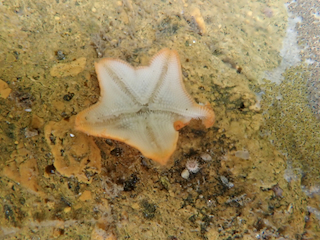
I was trying to figure out why this juvenile bat star (Patiria miniata) had a torn arm
without any disturbance by me, but I did not notice all the fish eyes staring at me until later.
|
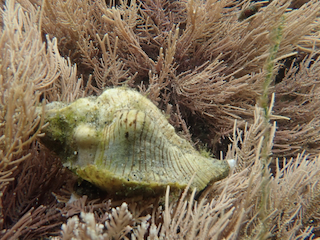
Pteropurpura festiva (festive murex)
| 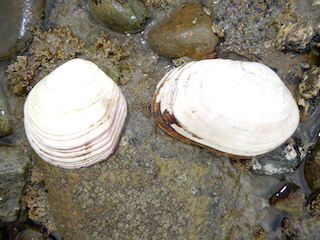
Left: Semele decisa (clipped Semele); Right: Tresus nuttallii (gaper)
| 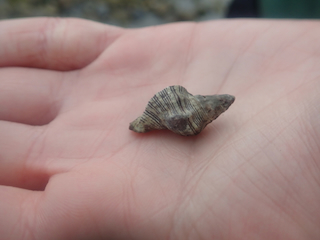
Roperia poulsoni (Poulson's rock snail)
|
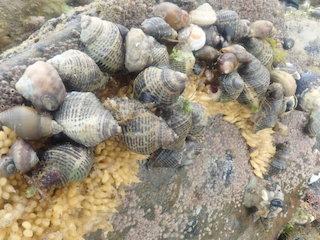
-
| 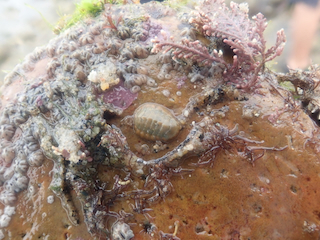
Cyanoplax keepiana (Keep's chiton)
| 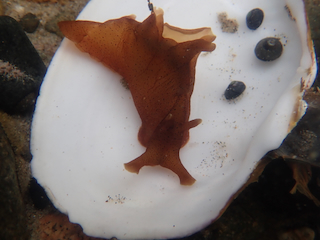
Tentative: juvenile California sea hare, Aplysia californica
|
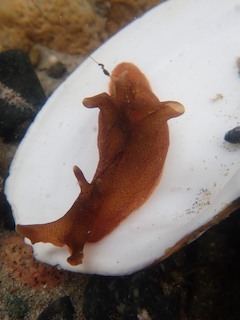
-
| 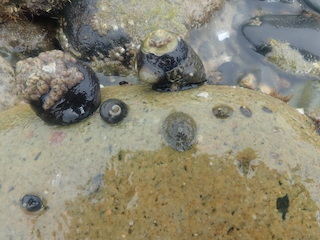
-
| 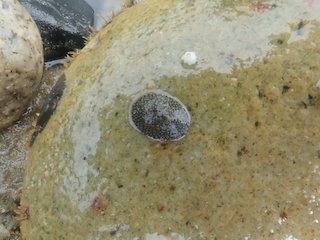
Lottia fenestrata (further north sometimes known as the chocolate limpet)
were common under rocks in the sand.
|
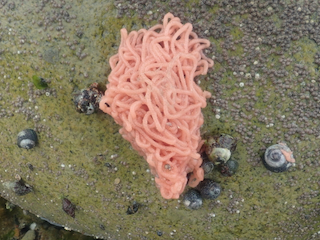
Aplysia sp. egg mass
| 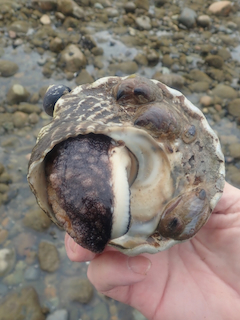
-
| 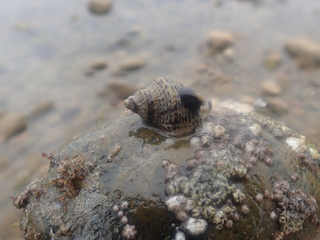
An Acanthinucella spirata (angular unicorn) with a Lottia asmi (black limpet)
attached. These limpets are more commonly found on Tegula spp.
|
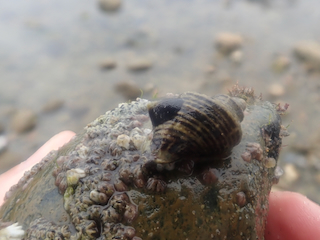
-
| 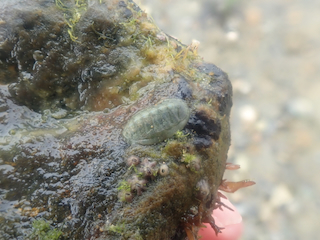
-
| 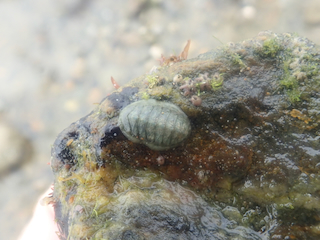
-
|
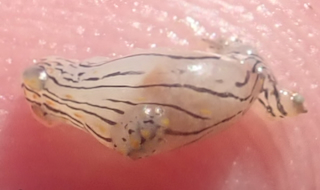
Polycera atra (orange-spike Polycera), found on washed up Egregia
menziesii (featherboa kelp) in the drift. The few I have seen of this species have been much darker, but it resembles one of the images (see Source) for this
species at iNaturalist. Source: iNaturalist image of
Polycera atra by Donna Pomeroy
| 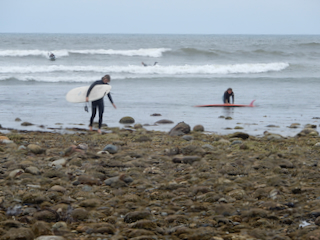
-
| 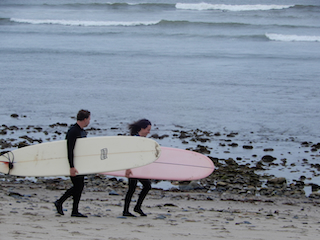
-
|
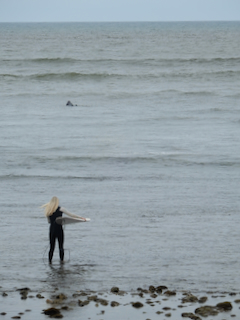
-
| 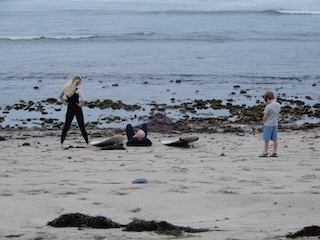
-
| 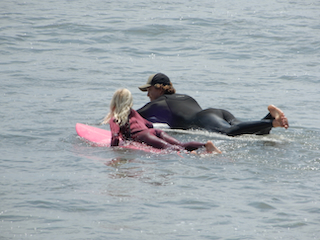
-
|
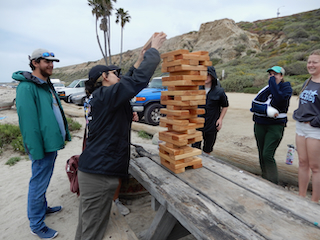
-
| 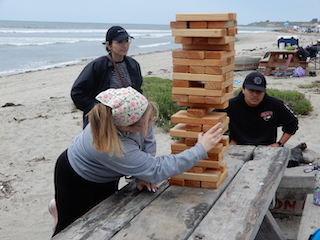
-
| 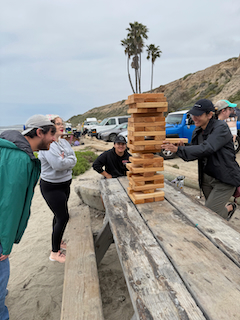
-
|
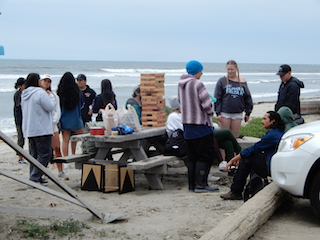
-
| 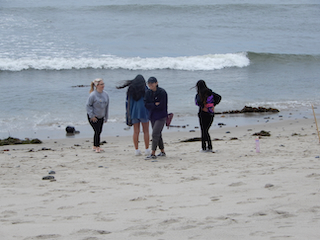
-
| 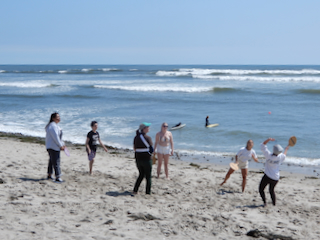
-
|
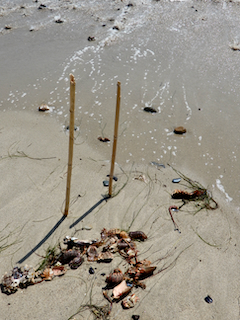
-
| 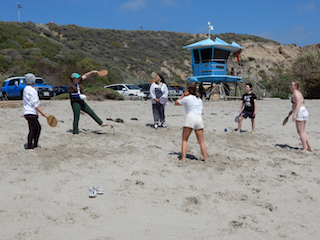
-
| 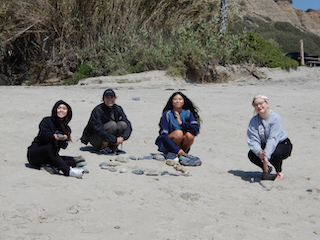
-
|
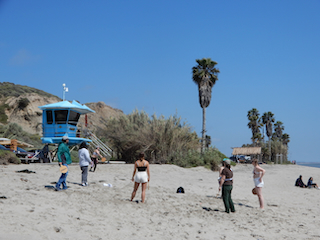
-
| 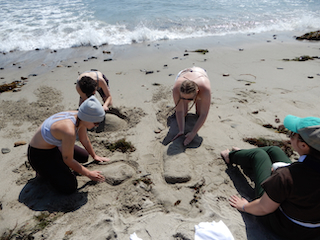
-
| 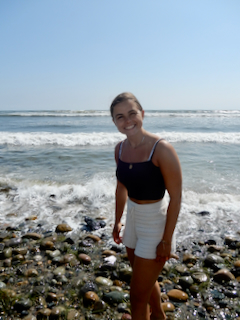
-
|
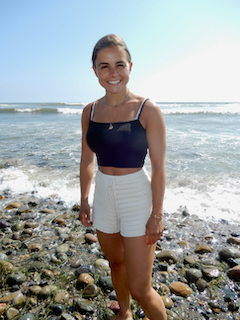
-
| 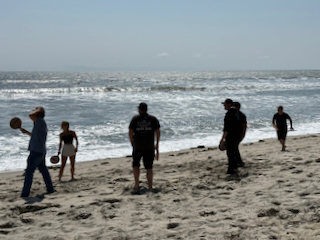
-
| 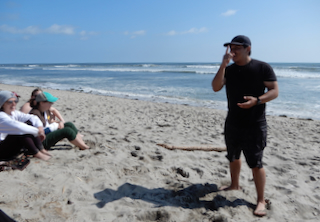
-
|
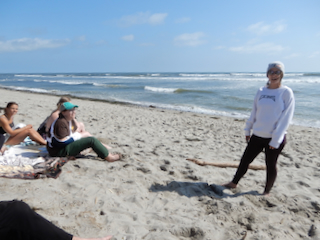
-
| 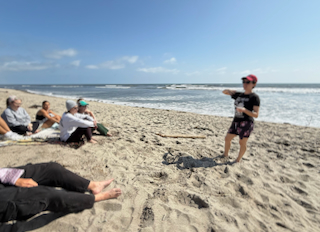
-
| 
-
|
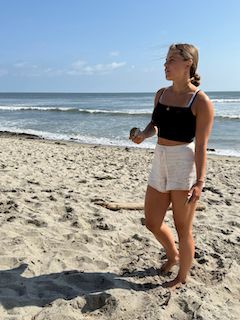
-
| 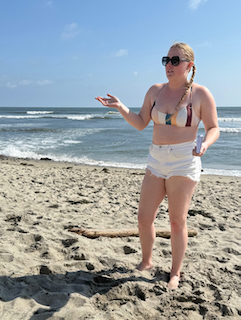
-
| 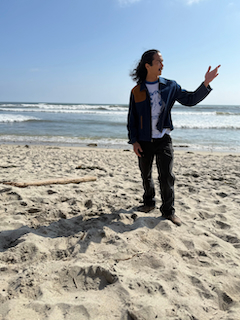
-
|
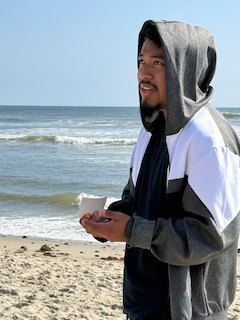
-
| 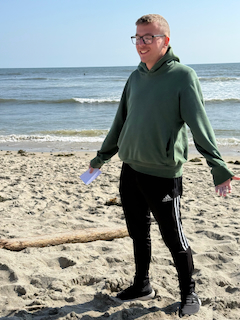
-
| 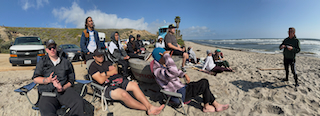
-
|
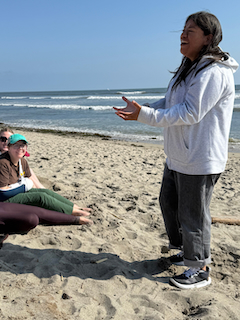
-
| 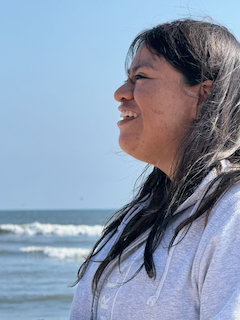
-
| 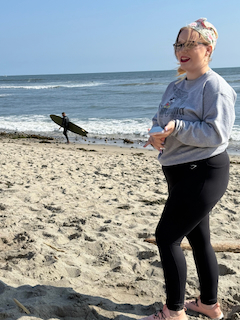
-
|
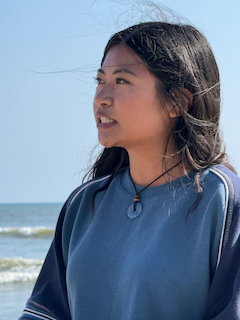
-
| 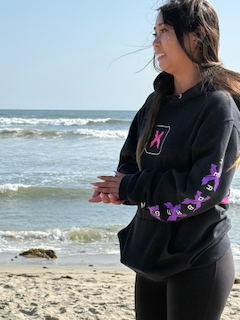
-
| 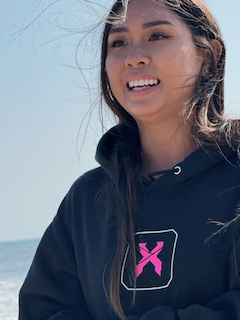
-
|
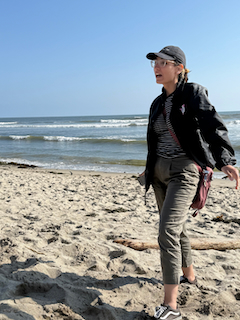
-
| 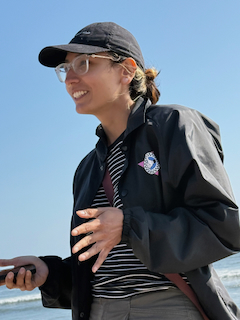
-
| 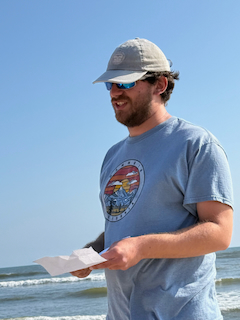
-
|
 Under Construction!
Under Construction! Under Construction!
Under Construction!